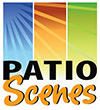
LED lighting is an extremely popular, if not the leading, form of lighting both in and outdoors. Light-emitting diode (LED) products create light 90% more efficiently than incandescent light bulbs. Rather than a filament, the electrical current passes through a microchip illuminating the tiny light source. Moreover, the heat produced by the LED gets absorbed into a “heat sink” to prevent performance issues before they begin.
LED lights never burn out! However, that doesn’t mean they will never need replacing. Instead of reaching the end of their life and, suddenly, going dark, LED lights experience “lumen depreciation.” That means that the brightness of the LED dims slowly over time—a long time. In fact, LED lights normally last years longer than either incandescent or compact fluorescent lighting (CFL).
Moreover, they’re perfect for all weather conditions because they don’t contain sensitive filaments that can be affected by severe weather. Well, unless they’re blown away during a hurricane—that is a possibility due to the region in which we live.
How LED lighting differs
There are several ways that LED lighting differs from other light sources. A well-designed LED layout is more efficient, extremely versatile, and, as stated above, lasts much longer. We all know how quickly incandescent bulbs seem to burn out these days. It’s said the approximate lifespan is about 1,000 hours and CFL bulbs last about eight times longer. LED lighting, however, blows them both out of the water with a comparison of a 25,000-hour lifespan. Take into account that some estimate the average lifespan of an LED light at being 50,000 hours—or more depending on how the lights are used—and it gets harder to justify using any type of lighting other than LED from a cost-factor standpoint.
LED lights are a “directional” light source, rather than emitting light in all directions, which is how incandescent and CFL lights operate. The result is a light source that is able to use light and energy more efficiently in a multitude of ways. They don’t burn as hot as CFL or incandescent lighting which makes them more cost-effective right off the bat. LED lighting is guaranteed to be 40-50% more efficient than other light sources because they maximize lumens per wattage.
Revolutionary energy savings potential
It’s estimated that the widespread use of LED lighting could potentially impact monumental energy savings in the United States. In fact, some experts say that by 2035, the majority of lighting in the country will be using LED technology. It’s predicted to create energy savings that could top 569 Terawatt-hours (Twh) annually by that date. That’s a pretty big deal when compared to it being the same energy output of more than 921,000 megawatt (MW) power plants.
In comparison, CLF lights work when an electric current flows between electrodes placed at each end of a tube containing gases. The reaction produces an ultra-violet (UV) light and heat—the loss of energy through heat production makes is a less efficient source of energy than LEDs. The UV light transforms into visible light when it strikes the phosphor coating on the inside of the bulb. Incandescent bulbs, on the other hand, produce light by using electricity to heat a metal filament until it becomes “white” hot. As a result, this type of lighting releases 90% of its energy as heat.
Better for the environment
Eco-friendly is the name of the game these days. We want to do our part in passing on a world worth living in for generations to come. LED lights provide that because they reduce energy use by a large margin when compared to CFL and incandescent light sources.
Moreover, CFL lights use mercury internally as part of their construction makeup. Because of that fact, when CFL bulbs reach the end of their lifespan, they require special handling rather than tossing them out with the trash that hits the landfill.
Do you think all homeowners step up to that responsibility?
Create an ambiance with color
Rather than using colored casings, as is the case when using incandescent lights, LED lights naturally produce the colors amber, red, green, and blue. In fact, in order to produce white light, different color LEDs are combined to convert the color of the light to the familiar white light we use in and around our homes.
The ability to control the color and hue of outdoor lighting is very appealing to many homeowners today. Technology has enabled the use of remotes and, even, phone apps, that enable homeowners to program light shows that rival the professionals—with a little practice. Imagine the dramatic effect that colored lighting can have around the pool or to illuminate your landscaping or walkways.
Light up your life
If you’ve decided that LED lighting is what you’ll be using for your outdoor lighting, we think you made a good choice. The effects of colored lights illuminating a swimming pool area can be very dramatic—or romantic, as far as that goes.
We’re just saying…
LED lighting provides homeowners with many benefits, which include:
- Long lifespan
- Energy efficient
- Improved environmental performance
- Operate under extreme weather conditions
- No heat or UV emissions
- Flexible design capability
- Low voltage
- Dimming capabilities
- Color
The ability to use LED tube lighting makes lighting up paths and walkways a relatively easy task. Twinkling lights scattered among shrubbery or outlining tree branches create a tranquil scene. The possibilities are literally endless. When you complete the installation, you can be sure that the effect will be breathtaking… and if it’s not casting the desired effect, break out that remote and change it up! It’s that easy.
